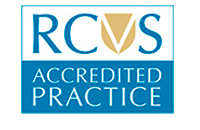24 hour contact: 01707 666297
Lameness
Lameness is one of the most common reasons for poor performance in racehorses and many are retired early as a result of pain or mechanical constriction.
The recognition, localisation and treatment of lameness can be challenging. Veterinary specialists at RVC Equine are experienced and renowned for the work-up of complex lameness cases and cases of poor performance.
The hospital, uniquely, offers quantitative gait analysis with one of the most advanced sensor based gait analysis systems currently available. The system captures small movement deficits and provides quantitative information about the gait changes observed in lame horses. When conducted in conjunction with a clinical lameness examination by our team of leading equine specialists, the output allows for a truly evidence-based decision making process.
Equine lameness examinations
The first step in a lameness examination involves taking a detailed history of the current problem, as well as any previous orthopaedic or medical conditions that the horse may have had.
A static examination is carried out to evaluate balance, conformation and muscle symmetry. The neck, back, pelvis and the limbs are thoroughly palpated to look for swelling, heat and pain. Hoof testers are applied to test for sensitivity in the feet.
The dynamic assessment involves walking and trotting the horse in a straight line, usually followed by trotting it on a circle on soft and hard surfaces. Occasionally, the horse will also be encouraged to canter or will be examined whilst ridden. Flexion tests, where each leg is held in flexion for a short duration, are performed to see if lameness can be induced or exacerbated.
Once the lame limb has been identified, a closer localisation of the area responsible for the lameness is necessary. This involves the use of diagnostic blocks, where small amounts of local anaesthetic are injected around peripheral nerves or into joints to desensitise a particular area of the limb. The horse is then re-assessed to see if there is any sign of improvement.
After localisation of the source of lameness in the limb, the area is examined for abnormal changes, using diagnostic imaging. We have sophisticated equipment on site: computed and digital radiography, equine ultrasound, nuclear scintigraphy (bone scan), computed tomography (CT) and Magnetic Resonance Imaging (MRI).

Once the cause of lameness had been identified, RVC equine specialists will discuss appropriate treatment and management with you and your veterinary surgeon.
This might include:
- A change in exercise regime
- Surgery
- Treatment with medications
- Equine regenerative therapies, such as stem-cell injection

